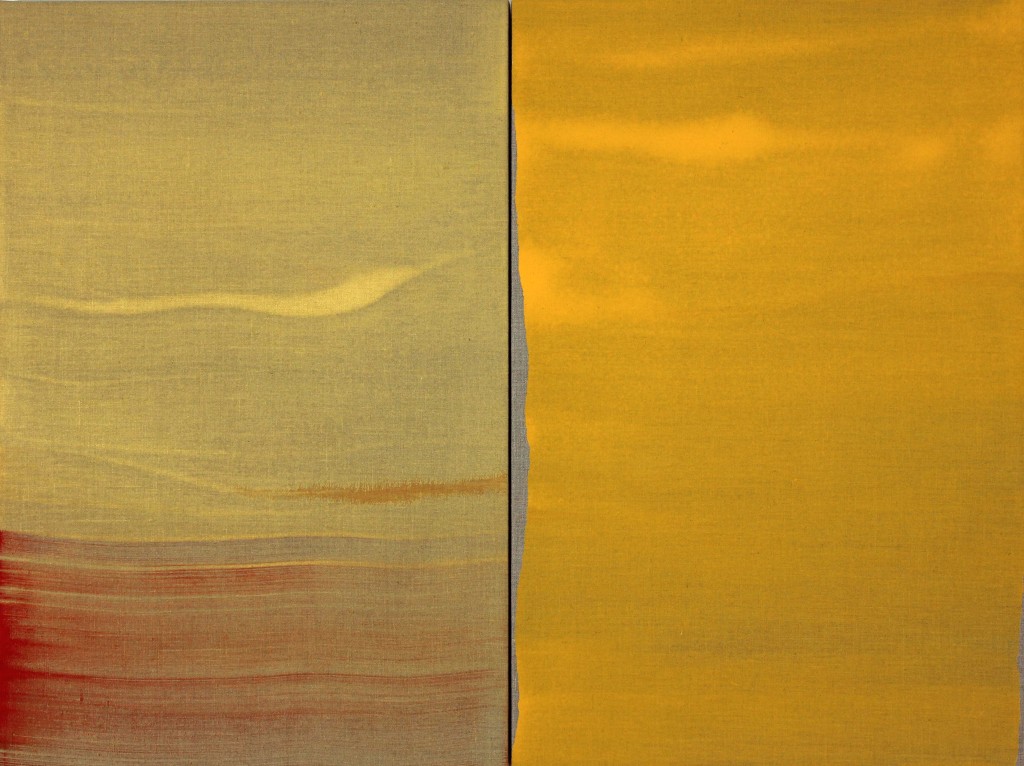
“One time is no time” speaks to the importance of sustained work and its development over time; to an insistence on repeating processes which produce results with minimal yet significant differences. It’s all about a way of addressing everyday work as a kind of mantra or ritual, like a conscious trance state that, on one hand, opens a space of freedom for the mind and, on the other, focuses intense attention on what is actually in front of our eyes. It is a form of absolute concentration that enables an appreciation of unique detail in each work and, at once, a form of behavior that facilitates a process of learning and reflection based on visual comparison as well as correspondence with knowledge stored in our memory.
The mission of working in series is not to induce a mode of repetition, which is merely underwritten by reproductivity. To undertake series implies a willingness to reflect slowly, endeavoring to subdivide each advance that takes place in order to continue a little further beyond the limits of the known. It involves creating intertwined elements that will be part of a long narrative continued over time. It is to devise a perfectly legible discourse, enhancing each little subtle nuance without letting it go unnoticed. Working in series allows the work to adopt a much broader and longer vision, starting out from highly specific approaches that will lead us to much more profound reflections.
These works being presented at Maus Contemporary are grounded in the idea of learning and perceptive capacities channeled through the sight. Something which could be summed up in the act of painting in order to see better. The relationship between pairs enables a comparison and appreciation of minimum details that can camouflage what is apparently homogeneous. The idea of physical limits created by the very nature of painting is permanently present in these works. Hence the fact that the titles, in Latin and thus harking back to the origins of language itself, are always related with the act of observing and the idea of boundary, in this way foregrounding the importance of attention.
The visualization of limits stimulates our perceptive attitudes both inside and outside the picture. The existence of duality is both necessary and inevitable for learning. The similitude, complementariness and contrast with which the painting is constructed and uncovered are shown as a path to knowledge; as an act of reflection and introspection. We look and reflect on our surroundings by means of what we learn through painting. Still today so simple and so old, painting has the capacity to take us from the physicality of the stain and color to much more global concepts. Concepts which are often intangible and inexplicable through words but which help us to understand and to better endure the world in which we live.- Nico Munuera, April 2018
Nico Munuera (*1974, lives and works in Valencia, Spain) moved from Lorca to Valencia in 1993 to study Fine Arts at the Faculty of San Carlos, during which he was was the recipient of several awards. He has been included in exhibitions at various art galleries since 1998, as well as in national and international art fairs. In 2003 he moved to Paris thanks a scholarship from the College of Spain to continue research on his project, primarily based on color field painting, perception ability, and process. In 2004 he was chosen to collaborate and show with Spanish painter Joan Hernández Pijuan in the Relevos program – a series of three institutional exhibitions in Madrid, Murcia and Barcelona. In 2007 he moved to New York thanks a grant from the Casa Pintada Foundation to work on a project on Japanese paper, based on color, automatic movement, and gesture. From 2008 to 2012 he lived and worked in Berlin, exploring the ideas of time, limits, and uncertainty. During the same period, he participated in the exhibitions To paint or not to paint at the Museum of Fine Arts in Murcia (2009); and the exhibition Rational Abstraction. Aldrich / Loureiro / Munuera / Uslé at the Galician Center of Contemporary Art, CGAC, in Santiago de Compostela (2011). (Maus Contemporary press-release)
Maus Contemporary. 2411 Second Avenue North. Birmingham, AL 35203
http://www.mauscontemporary.com
http://nicomunueraprojects.com/
Image: Aspicio duo II. 2017. Acrílico sobre lino. 60 x 80 cm. 2 piezas de 60 x 40 cm. c.u. Nico Munuera 2017
